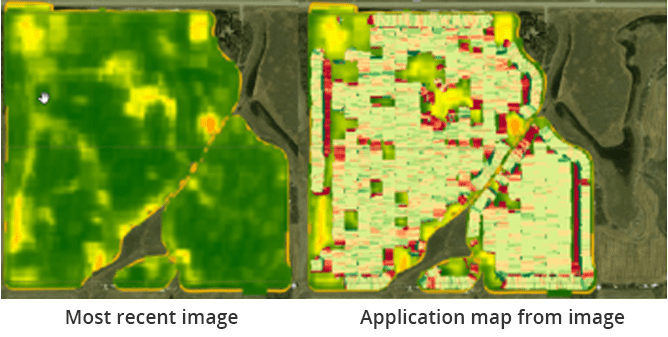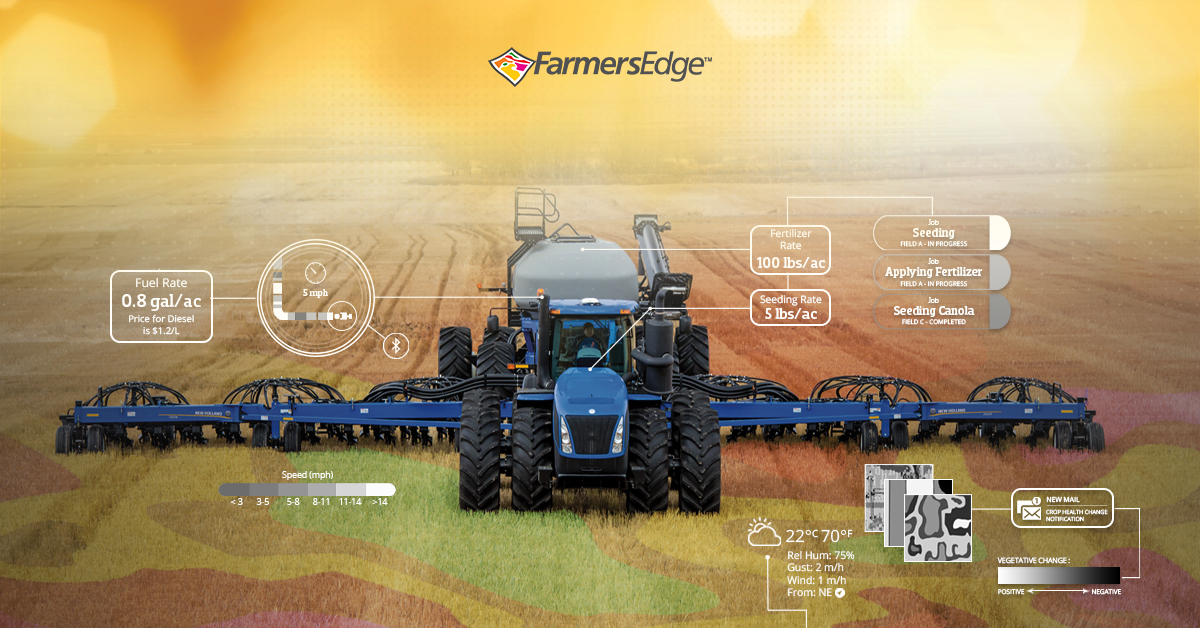By: Shane Thomas, Global Digital Ag Lead
Variable Rate (VR) application of fertilizer has been commonplace in western Canadian agriculture for over a decade now. Being able to apply nutrients where they have the highest likelihood of yield response and pulling back in areas where they aren’t obtaining a response has evolved western Canadian farmers approach to feeding their crops and supported agronomic initiatives like 4R Nutrient Stewardship.
The next opportunity farmers have to enhance their profitability is applying their crop protection products, specifically fungicides.
We know that many fields have variability – from topography differences, to texture differences, organic matter and even depth of topsoil! These different soil characteristics change not only water holding capacity but yield potential and disease risk. Because of this variability we also have areas in every field that are less prone to disease, or more prone to disease. For example, Sclerotinia (white mould) prefers denser crop canopy areas and heavier soil textures where an increased level of moisture enables the disease to thrive. Knowing this, it makes one wonder: Why apply fungicide across the entire field when there might be 15% of the field that is thin, spindly and not able to produce back what the fungicide even costs!
Let’s consider a canola field.
With VR fungicides there are 2 approaches:
- On/Off – Good areas get full rate fungicide, whereas the bad areas get none.
- High rate to low rate – Most fungicides have a high and low rate, you can go at the high end for the good areas of the field, and the low end for the poor areas of the field. This is a less common approach and should be discussed with your Richardson Pioneer agronomist.
Now comes the digital component: In season imagery – with Farmers Edge daily in-season normalized differentiated vegetation index imagery (NDVI) imagery we can see exactly where the good and bad areas of a field are. This enables us to get a robust understanding of where our strong yield potential is and isn’t. Now, we can’t simply look at the field from our computers or smart phones! We need to go out and ground truth each of these areas (good, bad, average), assessing based on a check list, such as the one from the Canola Council of Canada, and using local expertise to determine if any areas do need fungicide, or which areas require and which do not. From this point a prescription map needs to be made.
The practice of VR fungicide in canola is intended to reduce costs on the farm; ensuring optimal yield in the good areas and cutting costs in areas unlikely to see a return. For Farmers Edge offers VR fungicide mapping and prescriptions at no additional charge to variable rate customers.
In 2019 we had thousands of acres in Western Canada use VR fungicide. Here is one example where our customer experienced significant savings across a canola field:

In this example we have a 200/ac field. 70% of the field received the sclerotinia fungicide application that was $18/ac, 30% did not. This resulted in a savings of $1100 over the field, or $5.40/ac!
This has usage for crops beyond canola as well; cereals and pulses are great candidates to use VR fungicide too.
For more information on VR fungicide application, or any other VR application, contact your local Farmers Edge rep or contact us here.


